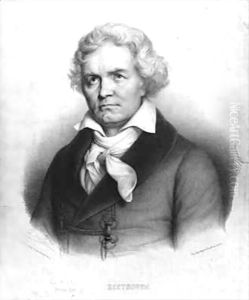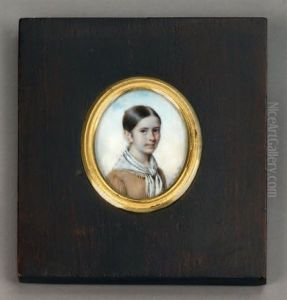Zephirin Felix Jean Marius Belliard Paintings
Zéphirin-Félix-Jean-Marius Belliard was a French artist, primarily known for his portraiture, but also for his historical and genre paintings. Born on February 17, 1798, in Saint-Martin-de-Sanzay, France, Belliard began his artistic journey at a young age and pursued his education in the arts with vigor.
Belliard initially studied under the neoclassical painter Jacques-Louis David, one of the most prominent artists of his time. This mentorship would have a lasting impact on Belliard’s style, which often reflected the classical influences and the emphasis on form and line typical of David’s teachings. Belliard's early works were marked by a meticulous approach to detail and a clear dedication to the neoclassical aesthetic.
Throughout his career, Belliard exhibited his work at the prestigious Salon in Paris, which was the official art exhibition of the Académie des Beaux-Arts in Paris. His participation in the Salon helped him to establish his reputation as a portraitist. Belliard was adept at capturing the likeness and character of his subjects, which included many notable figures of his time. He was particularly celebrated for his ability to render fine fabrics and textures in his paintings, a skill that added a touch of luxury and realism to his portraits.
Belliard's historical and genre paintings also received attention and praise. These works often depicted scenes from history or everyday life with a romantic flair, showing his ability to weave narrative and emotion into his compositions. Despite the popularity of romanticism during his lifetime, Belliard maintained a strong neoclassical influence in his work, which distinguished him from his contemporaries who were more fully embracing the romantic movement.
After a lifetime dedicated to the arts, Zéphirin-Félix-Jean-Marius Belliard died on October 14, 1869, in Paris. Although not as widely recognized today as some of his contemporaries, Belliard's contributions to French art, particularly in the field of portraiture, remain noteworthy. His works continue to be appreciated for their technical skill and the window they provide into the styles and tastes of the 19th-century French bourgeoisie.




